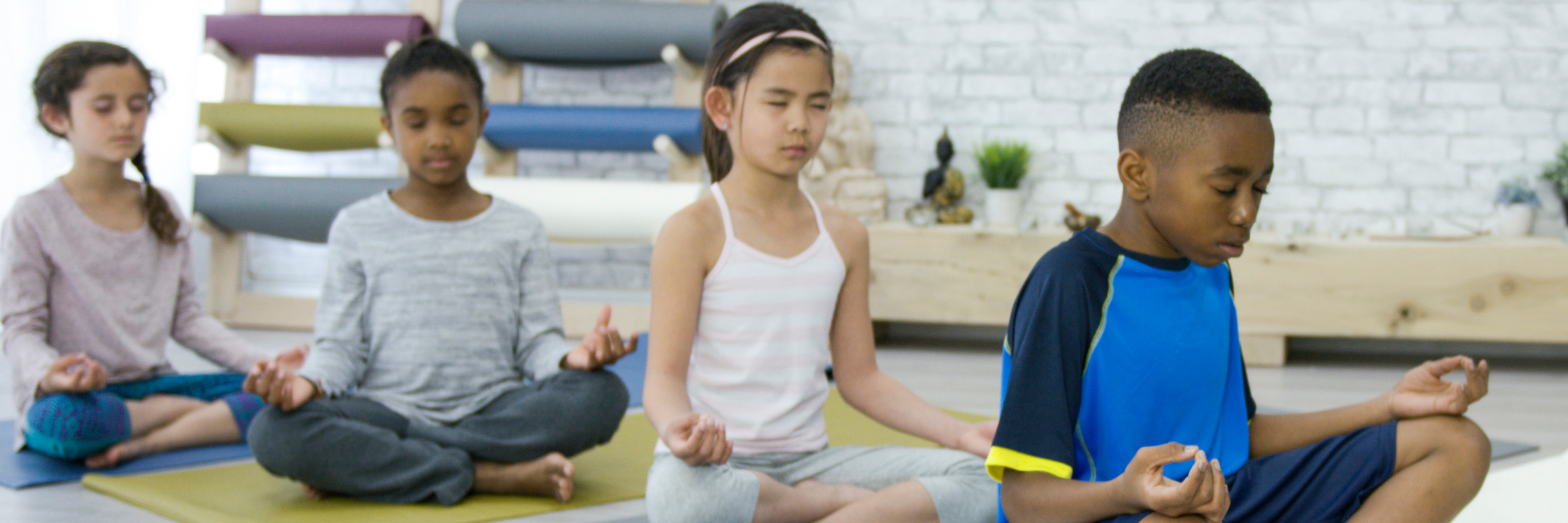
Mindfulness for Kids: 4 Easy Ways to Help Kids be Mindful
We know that mindfulness tools help adults calm down and become more emotionally regulated, so can they do the same for kids? Yes! There’s one caveat though. Our kids are great at doing what we do, and often suspicious of things we tell them to do, but aren’t doing ourselves (kids have amazing b.s. meters). In other words, with mindfulness, as with everything else in parenting, modeling is the most effective teaching tool. So as I share these 4 easy ways to share mindfulness for kids, remember that the best thing you can do is practice them yourself.
Mindfulness tools can help children manage the stress and anxiety that comes up in their lives. It can help them calm down when they’re feeling unsettled, and will help them build their overall ability to regulate their emotions.
Should kids meditate? The Dali Lama once said, “If every 8 year old in the world is taught meditation, we will eliminate violence from the world within one generation.” Maybe so, but we can also encourage mindfulness practices—that help kids pay attention and tune into their inner and outer worlds—without forcing them into a formal practice of meditation. Little kids are very naturally fully present in the moment, so it doesn’t have to take much to nudge them toward mindful awareness.
In fact, mindfulness tools for kids should be easy and fun. It should be something you do together to become calmer, more aware, and more connected to each other.
DO NOT attempt to teach any of these tools when your child is dysregulated, as in, “You’re frustrated and upset right now, take deep breaths and go meditate.” That’s the fastest way to turn your child off to mindfulness tools.
Instead, here’s what you can do to teach your child mindfulness practices:
#1 Encourage your child to tune into their senses
Mindfulness is the intentional practice of becoming aware in the present moment. The fastest way to do that is through our senses—taste, touch, sight, sound, and smell. The simplest way to slow down and be mindful with your child is to encourage them to tune into their senses. Take a moment to ask your child, “What do you hear?” then really listen to their answer with curiosity, practicing to be present yourself. Ask about the closest sounds, the farthest away sounds, etc. You can do the same with each of the senses.
#2 Encourage observation, wonder, and awe on walks
Instead of hurrying your child along to the next activity, make the walk the activity and encourage your child to engage in their natural wonder and delight on walks. Stop and look very closely at the leaf or the bug. Be curious about nature. Be amazed at the infinite variety that life takes. Breathe deep and slow. Be still and notice as if you were an alien beamed down to earth. Isn’t the world amazing? Share this experience with your child on a regular basis.
#3 Teddy bear breathing at night
Bedtime should be the time when we teach our kids how to wind down and prepare our body-minds for sleep. We want to bring a calm, sleepy energy to bedtime, so that our kids can take their cues from us. It’s also a great time to practice this simple mindfulness activity, teddy bear (or whatever favorite stuffed animal) breathing.
Here’s how it works: you and your child each get a stuffed animal and lie down with it on your belly. You breathe in deep and slow, and as you do, you watch the teddy rise up as your belly rises. You breathe out a long exhale and watch teddy lower. Teddy wants to be slowly rocked to sleep, so you breathe with your teddy, calming everyone down and relaxing into bedtime.
#4 Mindfulness for Kids Episode of the Mindful Parenting Podcast
Recently I invited my friend Christopher Willard, psychologist and author to come on the Mindful Parenting podcast to share some easy, guided mindfulness practices for kids. It’s a series of episodes that cover everything from settling down, to mindfulness for performance anxiety, to visualizing clouds. You can find all the episodes here on the podcast page of MindfulMamaMentor.com and easily search for mindfulness for kids to find all of them. Listen to these short practices together to encourage awareness and emotional regulation—for both of you!
Of course the BEST way to encourage mindfulness in your child is to practice yourself. Mindfulness practices are the foundation of what we teach in Mindful Parenting because these tools help us steady our hearts, our minds, and our nervous systems so that we can be less reactive and more present for our children. And the best way to practice is with support. Wherever you are in your journey, I encourage you to check out the Mindful Parenting membership as an awesome resource to build your own practice and learn how to confidently discipline without punishment, creating strong relationships for life.
